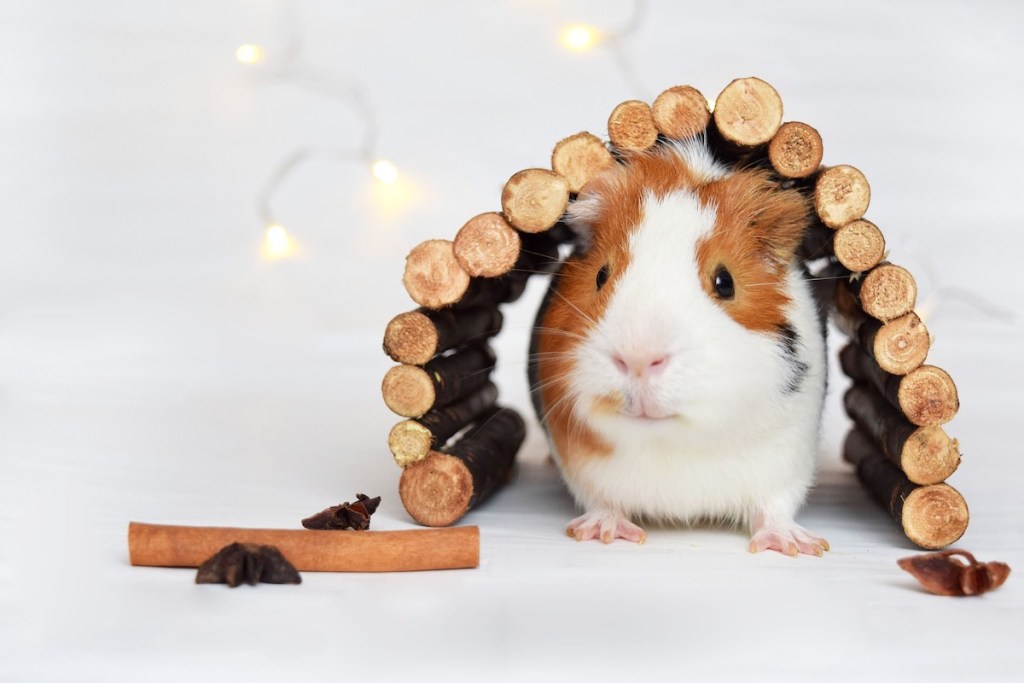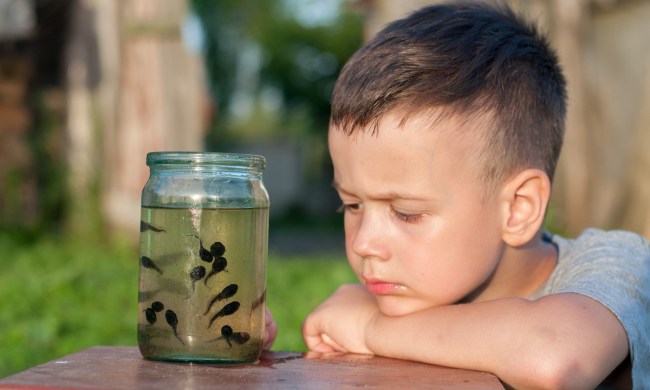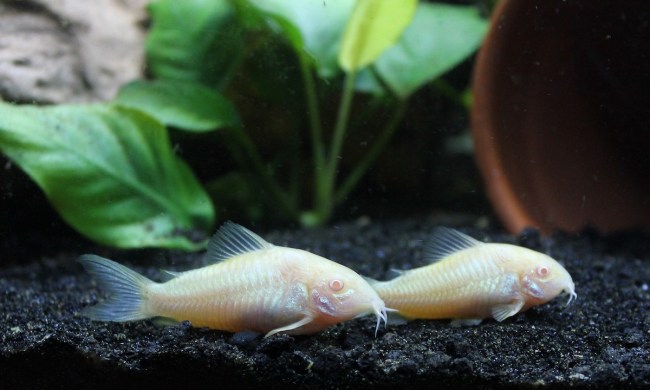Guinea pigs love to play and you won’t always be around to entertain them. Instead, you should give them a mixture of time with you, exercise opportunities, and toys that stay in the cage. Remember, their chompers will never stop growing (in fact, little piggies are born with a mouth full of teeth already), so you should provide plenty of hay and chew toys along with other forms of amusement.

How can I keep my guinea pigs entertained?
Getting a pet means locking yourself into big commitments: time, money, and energy. Guinea pigs must be housed in pairs or herds since they’re social animals, which both present challenges and offers advantages. For example, these little guys will play with each other, keeping themselves happily entertained without involving you. However, in addition to providing all the playthings, the humans of the household will definitely need to participate in playtime sometimes. Because guinea pigs often wake up at night, you’ll want something left in their cage to keep them occupied (and hopefully quiet) while you try to sleep.
Can guinea pigs have stuffed animals?
Yes! Cavies are chewers and you will likely find this pretend pet destroyed at some point. That’s OK! They had their fun and that’s the goal. Keep in mind that you should carefully select toys made for pets that do not include plastic, glass, or metal parts. Your little ones could wind up eating and swallowing them (and trust us, it’s a big vet bill).
What toys should my guinea pigs have?
No matter what assortment of personalities your fluffballs have, they are sure to love these toys and games that will keep them endlessly interested.
Chew & Treat Toy Assortment
According to multiple reviewers, guinea pigs absolutely love this bundle of toys that offers an assortment of chewable treasures to devour. Owners especially praise the variety of this collection, as it comes with a hanging ladder plus multiple games for munching. They all taste like apples (which your piggies will love), though some owners soaked theirs in water first to dispel some of the dye (though it is safe for animals).
Pet Tunnel
Rodents yearn to explore and need plenty of opportunities to do so. This particular tunnel can be used on its own, or be attached to the Living World Tent for extra fun. One happy customer proclaims it is a “Guniea Pigs Heaven!” and explains that they put multiple tunnels and tents together to create a full playset.
Small Animal Hideaway
Do your guinea pigs want to play in a see-through castle? Of course, they do! Some owners report that their pets climb inside for daytime naps or clamber up on top of the hideaway. Keep in mind this isn’t a small toy, so even though it might be too big for a little dwarf hamster, it is the perfect size for guineas.
Willow Ball Pack Chews
Keep your pets busy with this multi-pack of willow balls that they’ll instantly destroy. Remember that while providing chew toys is great, it doesn’t replace the need for consistent hay. If they do decide to eat the chews after they’ve had their fun, that’s fine. They’re perfectly safe for animal ingestion.
All of these accessories will keep your guinea pigs’ attention while you tend to other things. Just be sure to set aside plenty of playtime for the group of you as well. Of course, small pets should always be supervised while outside their cage, and the designated area should be guinea-proofed in advance. With the right toys, your little pals will enjoy unlimited access to fun.



